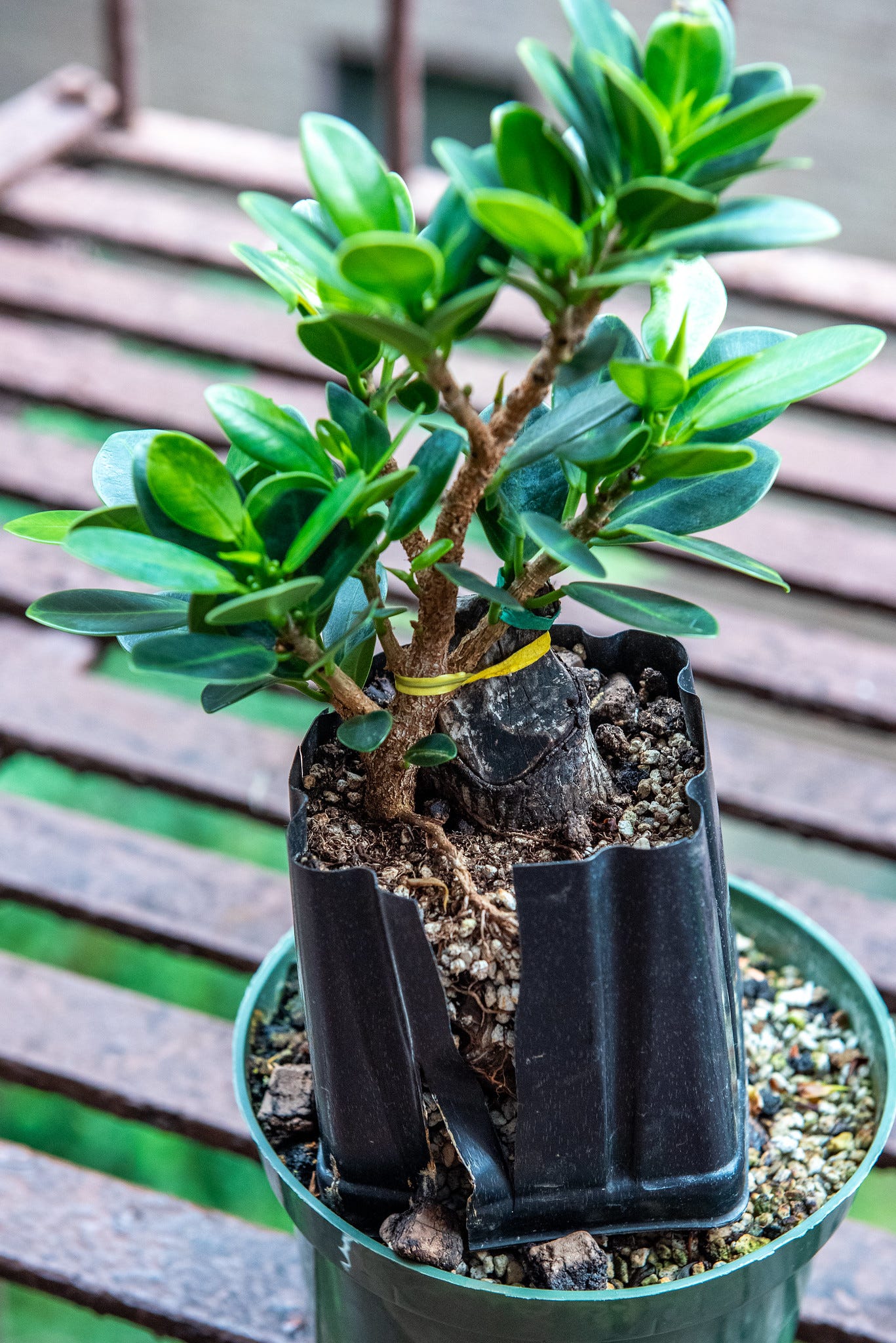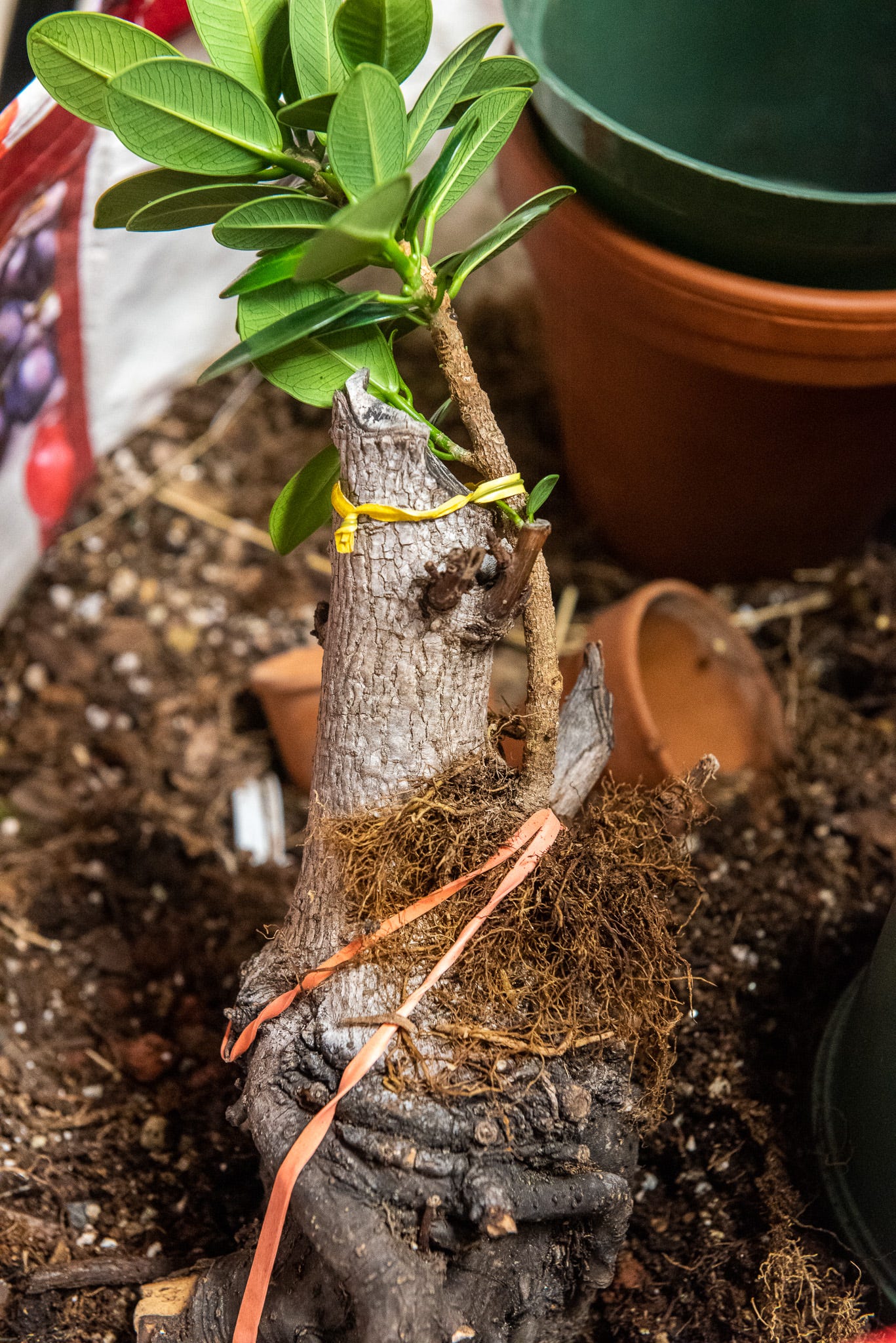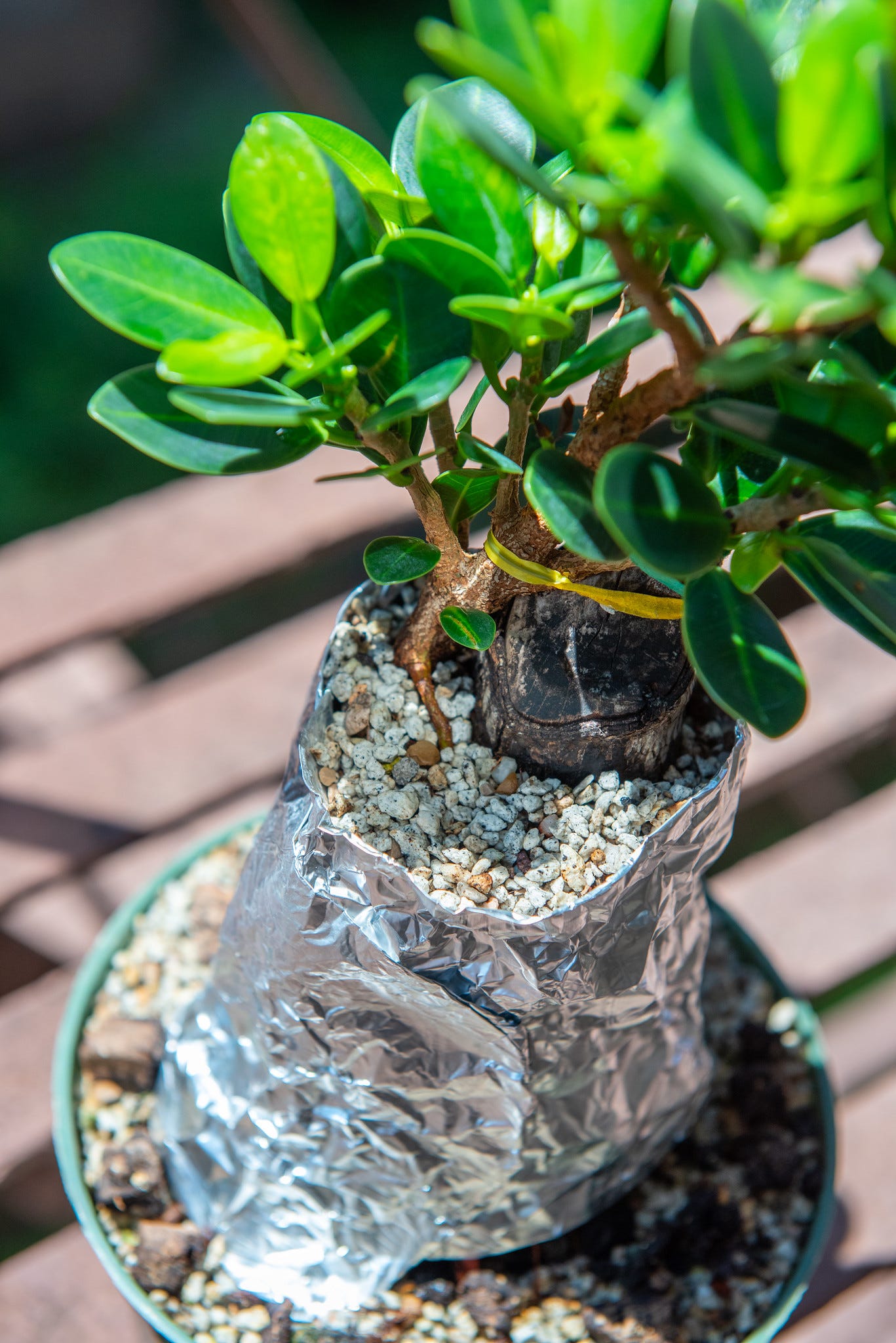The strangler fig bonsai I started in February has thickened up nicely. I’ve learned summer is the best season to do root work on tropical trees, so it was time for a look at the soil.
The flush of fine feeder roots is encouraging. These are the filaments that will form a web around the host trunk: a dead liquidambar tree I kept around for an epiphytic planting.
Here you can see the root web that will form the base of the future bonsai. As the roots thicken, they’ll begin to fuse into each other and latch on to the host trunk. The tree’s come a long way since February.
I didn’t trim any roots; I just draped them over the host trunk. I want them to wrap around the whole thing in a way that suggests the ficus is feeding on the dead tree, like an invading parasite. My hope is that as the ficus develops, the arrangement of these roots will convey a sense of motion to the tree, either that it’s holding on for dear life or using the host trunk as a launchpad to leap off into the air.
The wood between the soil line and the fig’s base has rotted away. As the ficus trunk thickens, it’ll expand to fill the cavity and latch on to the deadwood like the roots. You can see the beginning of that process here with young wormy tendrils reaching for the host trunk. The ficus is literally extracting water and nutrients from the rotted wood to fuel its own growth.
Of course I supplied most of the nutrients for this fig in the form of fertilizer. I use BioGold Original, an organic Japanese brand. Better growers than I have spilled oceans of ink on bonsai fertilizer, so if you ask why BioGold, my answer is that enough people like it for me not to have to think about it too much. You can find good prices on eBay. The little cakes don’t smell dank, and they’re even shaped into triangles so they don’t roll away when you water. When the cakes look like soused wicked witches, I add new ones. Set it and forget it.
You may ask why I’m bothering with imported organic fertilizer at all, and it’s a good question. Many bonsai artists exclusively use chemical fertilizers. You can get more growth faster with a supercharged dose, and you don’t have to wait for microbes in the soil to break down the fertilizer into usable nutrients, like you do with organic fertilizer. It’s not like I’m eating anything grown from this tree.
My wishy washy answer is the same I apply to my own diet. I’m sure inorganic fertilizers are good at what they do, but I think plants and animals grow best when they eat what their bodies have adapted to. For a tree, a heavy dose of pure nitrogen is like a slurry of protein powder and sugar syrup for a marathon runner. I don’t just want a fast growing tree; I want a strong, healthy tree that’s resilient to stress, infection, and infestation from parasites.
Organic fertilizers act as the seed crystals for a future ecosystem that forms in inorganic bonsai soil. In truth, the fertilizers don’t nourish the tree. They nourish microorganisms that digest the fertilizer and excrete base nutrients that a tree can absorb. Trees grown in diverse microbiomes seem all the healthier for it, especially over the long term.
Have you heard that factoid that our trillions of cells in the human body are outnumbered by the cells of microorganisms that live inside us? People usually share it as a gross-out statistic, but I’ve always found it comforting that my body is host to an ecosystem of exotic life I couldn’t begin to understand. To me it’s an affirmation that we don’t exist apart from nature. We rely on these microbes to help digest our food, fight off infection, and consume our waste. In a very real way, they’re a part of us. Consider using a Star Trek transporter to move yourself from one place to another. You’d need to bring the alien cells along for the ride. If you rematerialized without them, would you be whole?
I’ll let the strangler fig grow out for the rest of the year. The manipulated roots will need time to reorient themselves and attach to the host trunk. The fig freaks in one of my Facebook bonsai groups say it’s on the right path, so I’m encouraged. And the host trunk—itself a casualty of bonsai cultivation—finds purpose as something new.
Tree reading
Arizona’s secret cactus society. [Wall Street Journal]
Trees—in—space! [Phys.org]











Max, I think you're right to use organic fertilizer. I buy mine in bulk from the local co-op for under one dollar per pound. Although I don't do hard-core bonsai, I have a lot of little trees in pots. They do very well in a mix of sand and an organic starter media, also purchased from our local food co-op. I stir in a little of our home-grown compost when we have any left-over from the veggie garden.
I have the brain of an imbecile, so I love reading text with lotsa pictures, like this one. This was great Max, learned a lot.